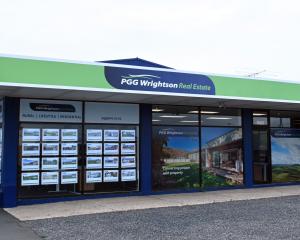New Zealand's economy has booked its best annual average growth rate since the global financial crisis, with retail, real estate and visitors among the sectors underpinning the rise.
Gross domestic product (GDP) for the quarter to December was up 0.8%, led by tourist and domestic spending, while for the year to December, average annual growth was up 3.5%, underpinned by real estate services and manufacturing.
Predictably, Finance Minister Bill English lauded the growth as ''consistent and sustainable'' under the Government's leadership, while Council of Trade Unions (CTU) economist Bill Rosenberg asked the more sobering question, ''Who's benefiting from the growth in the economy?''.
International ratings agency Moody's earlier this week said New Zealand had a ''two-speed'' economy, with strong domestic demand for housing and construction cushioning a weakened export sector, largely from the decline of global dairy prices.
The 3.3% growth was the highest annual increase since 2007, before the global financial crisis, Statistics New Zealand national accounts manager Gary Dunnet said.
Retail and accommodation increased 2.3% in the quarter to December, buoyed by a 15% increase in international tourist spending, while New Zealand household spending also increased 0.6%.
''This is the largest growth we've seen in retail and accommodation since the 2011 Rugby World Cup,'' Mr Dunnet said in a statement yesterday.
''While some of this growth comes from more spending by New Zealanders, overseas visitors had a bigger impact. Spending by Chinese, US, and UK visitors all increased in 2014, though Australians spent less,'' he said.
Mr English said in 2014 there were 80,000 new jobs created, record labour force participation hit 69.7%, average weekly wages grew 2.5%, while inflation was at 0.8%.
''The good news about New Zealand's economic growth is that it has proved to be consistent and sustainable, which is contributing to confidence about hiring and investment,'' he said in a statement.
He said New Zealand families with mortgages were able to ''get ahead'', in experiencing a long period of stable, low interest rates; with the Government's leadership and direction assisting the economy to grow, which helps New Zealanders, he said.
Mr Rosenberg said analysing New Zealand incomes showed ''an unfair proportion of the [growth] benefits are going to the top 1% [of earners]''.
''More of the income generated by the economy is also going to profits of overseas companies, leading to a fall in the resources available to people living in New Zealand.''
He noted the top 1% earners' incomes had risen over two years from 8.5 times the average income to 9.7 times, while the top 0.1% of earners' incomes rose from 19 times the average income to 23 times.
Mr English compared New Zealand's annual growth rate of 3.5% (which is higher than the average annual 3.3%) as one of the ''higher performing'' economies in the Organisation for Economic Co-operation and Development, against the UK's 2.7%, Australia's 2.5%, US' 2.4% and Japan's 0.7%.
ASB chief economist Nick Tuffley said the fourth quarter provided a ''strong finish'' to 2014, with a ''surge'' in tourist spending and housing demand boosting activity.
While wholesale trade and manufacturing held up better than had been indicated in recent surveys, Mr Tuffley cautioned manufacturing exporters would come under pressure for the first-half trading of 2015, because of the high New Zealand dollar, against its Australian counterpart.












